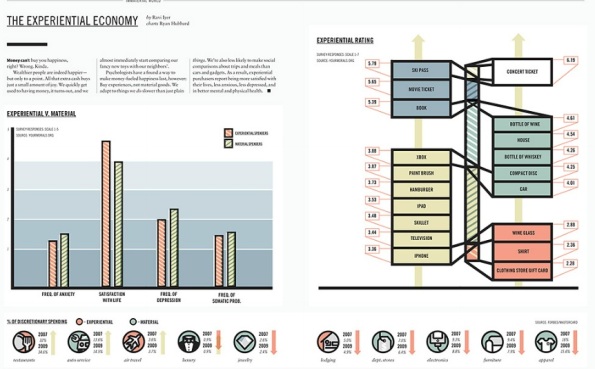 With the arrival of ever more and ever newer forms of (social) media, the opportunities for brands to communicate their message and position their image increases. But so does the pain for marketers. How do you make yourself heard in the chaos of media messages fired at the consumer every day?
With the arrival of ever more and ever newer forms of (social) media, the opportunities for brands to communicate their message and position their image increases. But so does the pain for marketers. How do you make yourself heard in the chaos of media messages fired at the consumer every day?
In this presentation, JESS3 co-founder and President, Leslie Bradshaw, shares her insights on how to approach the monumental task of creating around-the-clock content for an always-hungry digital world. Because:
Creating content for brands is a delicate balance between business objectives, creativity and user goals.
The left brain and the right brain, in other words. In order to create and maintain a strong and relevant (online) presence, brands need to think and act like publishers, producing content in the form of blogs, images, infographics, and videos to keep the consumer entertained and interested. From the importance of good design to the employment of your own personal army of copywriters, this presentation outlines the work required for producing great content.
.
.
.
Dollar Shave Club came up with a refreshing new approach to shaving ads. No more brooding-looking models self-congratulatory rubbing their chins after using a

 Business process management (BPM) delivers significant benefits to organizations, but some organizations have faced many problems due to wrong turns along the way, according to Gartner, Inc. Gartner analysts have identified five BPM threats BPI (business process improvement) leaders need to be mindful of as organizations progress on their BPM initiatives. John Dixon, research director at Gartner, commented:
Business process management (BPM) delivers significant benefits to organizations, but some organizations have faced many problems due to wrong turns along the way, according to Gartner, Inc. Gartner analysts have identified five BPM threats BPI (business process improvement) leaders need to be mindful of as organizations progress on their BPM initiatives. John Dixon, research director at Gartner, commented: In the world of business, the term silo almost always has negative connotations. It’s typically used to describe a department or other business unit that does not communicate or share common goals with other functional units of the enterprise. Functional silos usually lead to duplicated business processes, a lack of innovation, and the inability to respond quickly and effectively to customer needs and changing marketing conditions. Therefore, silos often result in excessive costs and process inefficiencies, and they can depress revenue growth and profitability.
In the world of business, the term silo almost always has negative connotations. It’s typically used to describe a department or other business unit that does not communicate or share common goals with other functional units of the enterprise. Functional silos usually lead to duplicated business processes, a lack of innovation, and the inability to respond quickly and effectively to customer needs and changing marketing conditions. Therefore, silos often result in excessive costs and process inefficiencies, and they can depress revenue growth and profitability. Sometimes its good to remember that marketing while of course a deeply
Sometimes its good to remember that marketing while of course a deeply 
 HP knows where youre coming from they didnt just develop a
HP knows where youre coming from they didnt just develop a